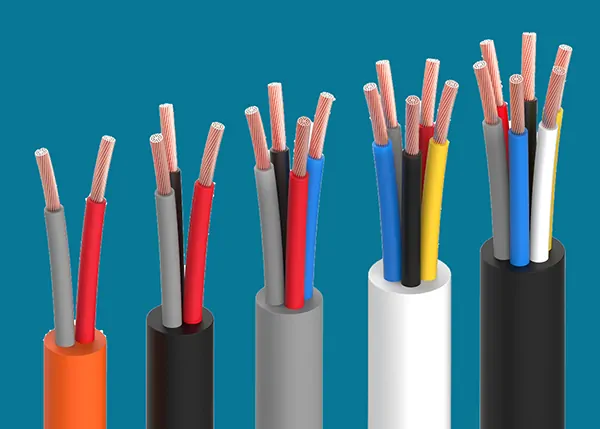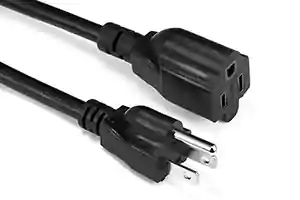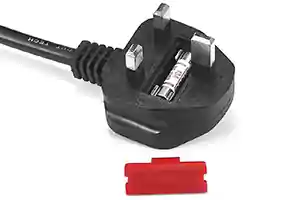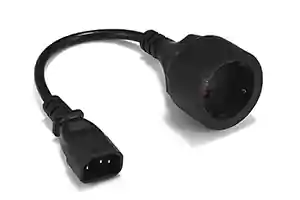Theme of this article:power cord color
We often see the three-prong plug wire to see the color of the three wires are not the same, that the three lines each line is the function of what? American Standard wire and the national standard wire is not the same?
Papa helu
International power cord color standards

For the three cores
L pole: is connected to the fire wire.
Common core color: black or teal (some companies called brown, brown), the U.S. standard Japanese standard commonly used in these two colors, European standard with teal (brown, brown)
N pole: connect the zero line.
Common core wire colors: keʻokeʻo, red, light blue. U.S. and Japanese standards commonly used in these three colors, European standards with light blue
E pole: ground wire.
Common core color: green or green yellow (some companies called yellow-green or green-yellow, yellow-green), the U.S. and Japanese European standards are commonly used in these two colors, many companies use the green-yellow.
When we buy power cords, cables can often see the power cord, cable printed with RVVP, RVV and some English letters at the beginning of a scurry of letters, many people are clear what they mean. I ka 'oiaʻiʻo, they are respectively table each power cord, cable model and use, the following we (Ollie strong power cord) for everyone to explain the use of several commonly used wire and cable representation.
The function of various cables
RVV: (227IEC52/53) polyvinyl chloride insulated flexible cable (cross-sectional area: 0.5-6.0 number of cores 1-24)power cord color
Uses: power lines, signal lines, household appliances, small power tools, meters and power lighting, etc.
This specification line as long as the national standard is not a big difference in price, but there is no shortage of impurities in the market copper, wire diameter is not enough, short meters, straight put (core copper wire not stranded or core wire not stranded, so that the tensile capacity is greatly reduced, increased resistance) to fill the situation.
Derivative model: RVVS : this model core wire stranding distance encryption, generally used in broadcasting systems.
RVVP: copper-core PVC insulated shielded PVC sheathed flexible cable, voltage 300V/300V 2-24 cores. Main quality indicators: wire diameter (including the core and braided wire, not the thicker the better, with impurities of copper to achieve resistance standards and do very thick), copper core purity, braiding density, stranding distance. Uses: mea kani, mika, intercom, monitoring, control installation.
RVS, RVB Suitable for household appliances, small power tools, mea kani, meters and power lighting connection with power cord, RVS can also be used for broadcast line or instead of RVV line. RVB in the case of low requirements can replace the gold and silver wire.
RG: physical foam polyethylene insulated access network cable for coaxial fiber optic hybrid network (HFC) in the transmission of data analog signals, this is the U.S. maʻamau, approximately equivalent to the national standard SYWV series.
Main quality indicators: copper core wire diameter, insulation thickness, braiding material (mostly aluminum-magnesium wire braiding in the market, good quality should use tinned copper), braiding density.
UTP: LAN cable uses: transmission of telephone, computer data, fire, burglar security systems, intelligent building information network. Commonly used UTP CAT 5, UTP CAT 5E with shielding models for STP.
KVVP: PVC sheathed braided shielded cable uses: electrical appliances, mika, power distribution devices signal transmission, control, measurement.
AVVR: polyvinyl chloride sheathed installation flexible cable power cord color(cross-sectional area: 0.12-0.5 core number 1-24) Purpose: signal, control. Such as access control signals, control, PTZ control, etc.
RV, RVP PVC insulated cable, PVC shielded cable, mainly used for equipment.
BV, BVR polyvinyl chloride insulated cable Uses: Suitable for electrical instrumentation equipment and power lighting fixed wiring with low resistance at affordable prices. In many occasions where the power supply is connected can be considered more.
RIB: speaker connection cable (audiophile wire, gold and silver wire) some audio cable models are often marked with the words “6N”, “7N”, the meaning is used to indicate the use of metal materials made of audiophile wire purity level. Ua lilo kēia mau laina hōʻailona i antenna maikaʻi loa no ka loaʻa ʻana o nā ʻano mea ʻino i ke kaiapuni a puni, “99.9999%”, you can use the “6N” that its purity is six 9, the larger the number in front of the N that the higher the purity of the audio cable.
Home theater audio equipment whether you need to use higher quality audio lines, the key is to grasp the principle of realism, within limits. For general popularity (less than 10,000 yuan) of audio equipment without the deliberate pursuit of high-quality wire, as long as the use of general cross-section of a larger copper-core signal cable can be. For better home theater audio equipment, you can consider using high-quality audio cable.
HYV, HYA data communication cable (indoor, outdoor) (core diameter 0.5mm, core number 2, 4, 8, etc.) that is, the telephone line, used for telephone communications and radio equipment connections and telephone wiring network wiring for the distribution box. The general core diameter of the market is 0.4 mm, there is almost with steel wire or copper aluminum alloy. Another telephone line is generally insufficient meters.
SYWV (Y), SYKV cable TV, broadband network special cable structure: (coaxial cable) single oxygen-free round copper wire + physical foam polyethylene (insulation) + (tinned wire + aluminum) + polyvinyl chloride (polyethylene),power cord color (equivalent to the American standard RG-6, RG-59).
Now on the market more braided with aluminum-magnesium wire (can not be welded, easy to oxidation), the core with copper-clad aluminum, copper-clad steel, so many people think that SYWV wire is cheaper than SYV wire, but in fact, it is not so much.
Notes.
1, does not have heat-resistant plastic mixtures such as natural rubber mixtures.
2, with heat-resistant plastic compounds such as resin butadiene rubber compounds.
Cable color regulations
National standard: yellow, green, red and blue represent A. B. C. N. Blue represent A.B.C.N respectively
European standard: red (L1), yellow/white (L2), blue (L3), black (center line), green/yellow (ground line)
Future standard colors: brown (L1), black (L2), gray (L3), blue (center line), green/yellow (lepo)
AC three-phase circuit of A-phase: yellow; B-phase: green; C-phase: red; zero or neutral wire, light blue; ground wire: yellow and green two-color. AC circuits connected with two-core wires or two stranded wires: red and black in parallel.
Positive DC circuits: brown; negative: blue.(power cord color)
Current GB7947-2006 (IDT IEC 60446-1999).
The following colors are allowed for conductor identification: black, brown, red, orange, yellow, green, blue, purple, gray, keʻokeʻo, pink, lime green.
Preference is given to the use of black or brown to indicate the AC phase conductor in the system.
A single green and yellow color is permitted only where confusion with the protective conductor coloring is unlikely to occur power cord color.
Blue should be used as the color identification where the circuit contains a neutral or intermediate conductor. To avoid confusion the use of light blue is recommended.
Hong Kong: (new standard implemented in July ’97)(power cord color)
Old: three-phase: red, yellow (or white), blue Neutral: black Protective ground: yellow-green
New: three-phase: brown, black, gray Neutral line: blue Protective ground: yellow-green
Streaming three-phase circuit of A-phase: yellow; B-phase: green; C-phase: red; zero or neutral wire, light blue; ground wire: yellow and green two-color.
AC circuit connected with a two-core wire or two stranded wires: red and black in parallel.
Positive DC circuits: brown; negative: blue.
1 according to the color of the wire when marking the circuit
1.1 Black: the internal wiring of devices and equipment.
1.2 Palaunu: the positive terminal of the DC circuit.
1.3Red: three-phase circuits and C-phase.
The collector of a semiconductor triode.
The cathode of a semiconductor diode, rectifier diode or thyristor.
1.4 yellow: A-phase of a three-phase circuit.
The base of a semiconductor triode.
Thyristor and thyristor control poles.
1.5 green: three-phase circuit of the B-phase.
1.6 blue: the negative pole of the DC circuit.
The emitter of a semiconductor triode.
The anode of the semiconductor diode, rectifier diode or thyristor.
1.7 light blue: the zero or neutral line of a three-phase circuit.
DC circuit grounding center line.
1.8 keʻokeʻo: the main electrode of the thyristor.
No designated color for semiconductor circuits.
1.9 yellow and green bicolor (each color is about 15 i 100 mm wide alternating patching); grounding wire for safety.(power cord color)
1.10 Red and black in parallel: AC circuits connected with two-core wires or two stranded wires.
2 according to the circuit to select the wire color
2.1 A-phase of the three-phase AC circuit: yellow.
B-phase: green.
C-phase: red.
Zero or neutral wire, light blue.
Safety ground wire: yellow and green two-color.(power cord color)
2.2 AC circuits connected with two-core wires or two stranded wires: red and black in parallel.
2.3 The positive terminal of the DC circuit: brown.
Negative terminal: blue.
Grounding center line: light blue.
2.4 The collector of the semiconductor triode of a semiconductor circuit: red.
Base: yellow.
Emitter: blue.
Anode of semiconductor diode and rectifier diode: blue.
Cathode: red.
The anode of a thyristor: blue.
Control electrode: yellow.
Cathode: red.
Control electrode of bi-directional SCRs: yellow.
Main electrode: keʻokeʻo.
2.5 The internal wiring of the entire device and equipment is generally recommended: black.
Semiconductor circuits: keʻokeʻo.
When there is confusion: allow the choice of colors other than the specified color power cord color(e like me: orange, purple, gray, green-blue, rose red, etc.).
2.6 specific color, in a wire, if there are two or more can be marked color, depending on the specific circumstances of the circuit, according to the circuit needs to indicate a certain meaning of the color.
Nānā: For a certain product (such as marine appliances) bus bar, such as international standards have been designated, and with the provisions of Article 2.1 he wahi liʻiliʻi 2.3 differences, but also allow the color scale according to the international standard for color.(power cord color)
Excerpted from 《GB2681-81》.
He loea ʻo DCpowercord nā mea hana kaula mana. Our engineers will answer if you have any questions about the power cords. Please contact us directly!




